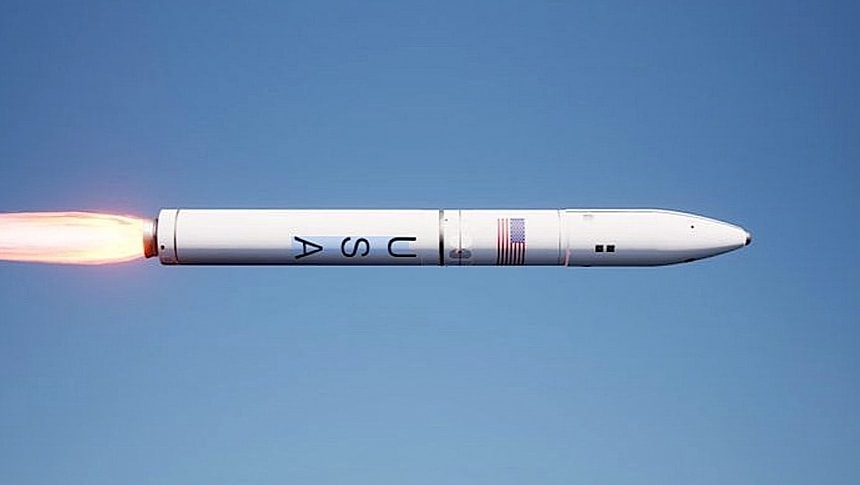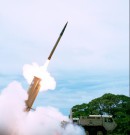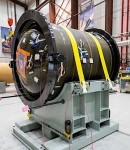Next Generation Interceptor (NGI) is the not-so-fancy name that hides the United States' upcoming ballistic missile interceptor. It's an effort that began not long ago, in 2021, and it's supposed to cost a staggering $3.7 billion.
The huge sum of money started being divided between contractors that same year. The system is being developed by Lockheed Martin and partner Aerojet Rocketdyne. Separately, Northrop Grumman and Raytheon are working on their own version of “an interceptor designed to defend the nation against the most complex long-range threats."
The NGI is not something that will be built from scrap, from top to bottom, but will come as an upgrade to the existing Ground-Based Midcourse Defense (GMD) anti-ballistic missile system. It is, if you will, the country's first line of defense against intercontinental ballistic missiles (ICBM) coming from afar.
It is Northrop Grumman that announced last week a major development on the NGI front, and that is the delivery of the first stage three solid rocket motor (SRM) for the interceptor (check the attached gallery for a peak at the thing). It's the piece of hardware meant to power the booster of the NGI, thus a crucial one in the overall design.
The company said the piece of hardware was sent to the Arnold Air Force Base in Tennessee. It is there where the first full static fire test of the technology is scheduled to take place not long from now.
The exact date and profile of the firing are not public knowledge, but whatever the company and the military will learn from it will be used to fine-tune the solid rocket motors' ballistic predictions and inform other similar motor designs prior to qualification testing.
If all goes according to plan in this stage, Northrop Grumman "will complete additional full-scale static test firings for each of its NGI SRMs in 2024." The ultimate goal this year is to have the system ready for the next stage of development, which is the All-up Round design – the preliminary design review was completed earlier this year.
On its end, Lockheed Martin announced in the summer of last year it had validated prototype communications radio technology for the system.
Naturally, given the sensitive nature of the project, the exact specifications of the new interceptor are not known. What we do know is that each interceptor will be powered by a three-stage booster, and will use a series of tracking sensors and computers to deliver the kill vehicle to target.
As per available data the U.S plans to have at least 21 of these new interceptors, and if need be it will launch them from the silos located in Ft. Greely, Alaska, and Vandenberg Air Force Base in California.
Northrop Grumman said the first of this new arsenal of weapons should be ready for operation in 2027.
The NGI is not something that will be built from scrap, from top to bottom, but will come as an upgrade to the existing Ground-Based Midcourse Defense (GMD) anti-ballistic missile system. It is, if you will, the country's first line of defense against intercontinental ballistic missiles (ICBM) coming from afar.
It is Northrop Grumman that announced last week a major development on the NGI front, and that is the delivery of the first stage three solid rocket motor (SRM) for the interceptor (check the attached gallery for a peak at the thing). It's the piece of hardware meant to power the booster of the NGI, thus a crucial one in the overall design.
The company said the piece of hardware was sent to the Arnold Air Force Base in Tennessee. It is there where the first full static fire test of the technology is scheduled to take place not long from now.
The exact date and profile of the firing are not public knowledge, but whatever the company and the military will learn from it will be used to fine-tune the solid rocket motors' ballistic predictions and inform other similar motor designs prior to qualification testing.
If all goes according to plan in this stage, Northrop Grumman "will complete additional full-scale static test firings for each of its NGI SRMs in 2024." The ultimate goal this year is to have the system ready for the next stage of development, which is the All-up Round design – the preliminary design review was completed earlier this year.
On its end, Lockheed Martin announced in the summer of last year it had validated prototype communications radio technology for the system.
Naturally, given the sensitive nature of the project, the exact specifications of the new interceptor are not known. What we do know is that each interceptor will be powered by a three-stage booster, and will use a series of tracking sensors and computers to deliver the kill vehicle to target.
As per available data the U.S plans to have at least 21 of these new interceptors, and if need be it will launch them from the silos located in Ft. Greely, Alaska, and Vandenberg Air Force Base in California.
Northrop Grumman said the first of this new arsenal of weapons should be ready for operation in 2027.








